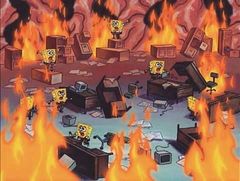![]()
![]()
![]()
Use LEFT and RIGHT arrow keys to navigate between flashcards;
Use UP and DOWN arrow keys to flip the card;
H to show hint;
A reads text to speech;
22 Cards in this Set
- Front
- Back
|
Background |
Memory Bartlett believed memory was reconstructive Not seen as a conscious process Loftus was concerned with the fragility of memory |
|
|
Schema theory |

Our experiences and knowledge are stored in our schema of the brain, like filing cabinets. |
|
|
Reconstructive memory |
Barlett theorised that we omit details to make our memories "make sense" |
|
|
Leading questions |
A question that steers you towards an answer due to bias in the question |
|
|
Aim |
Investigate the effects of language on memory as well as whether leading questions have an impact |
|
|
Experiment 1 - sample |
45 American students from Washington State University |
|
|
Experiment 1 - DV |
The question "About how fast where the cars going when they (verb used) each other?" was asked. |
|
|
Experiment 1 - IV |
The verb used out of this list: • Smashed • Collided • Bumped • Hit • Contacted |
|
|
Experiment 1 - Experiment type |
Labratory experiment |
|
|
Experiment 1 - Experimental design |
Independent measures |
|
|
Procedure for experiment 1 |
1. All participants were given 7 film clips of a staged car crash in different orders to counteract order effects 2. All filled out a questionnaire after each 3. Using a smoke-screen, the DV was eventually asked 4. The IV was changed per participant and tallied up to get a result |
|
|
Data collection method |
Quantitative data |
|
|
Results |
Verb used and the mean speed (mph) calculated: Smashed - 40.8mph Collided - 39.3mph Bumped - 38.1mph Hit - 34mph Contacted - 31.8mph |
|
|
Conclusion |
Reconstruction of memory was made as verb was changed. A higher speed was recorded when the verb used was more aggressive. |
|
|
Experiment 2 - sample |
150 students, 50 in each condition |
|
|
Experiment 2 - Experiment type |
Laboratory experiment |
|
|
Experiment 2 - Experimental design |
Independent measures |
|
|
Experiment 2 - IV and DV |
IV - verb smashed or hit used DV - the question "Did you see broken glass?" Asked |
|
|
Experiment 2 - Conditions |
Verb 'smashed' used condition Verb 'hit' used condition Control condition |
|
|
Procedure for experiment 2 |
Stage 1 - participants watched the said 7 films of the staged car crash and filled one questionnaire based on their condition (whether 'verb' smashed or verb 'hit' was used and control group)
Stage 2 - A week later, they filled out another questionnaire containing 10 questions. One question asked was "Did you see broken glass?" which they answered with either a yes or a no. |
|
|
Results |
Smashed verb used : 16 out of 50 remembered broken glass Hit verb used : 7 out of 50 remembered broken glass Control group : 6 out of 50 remembered broken glass |
|
|
Conclusion |
The question asked was a leading question that implanted a false memory in the participants head. Asking questions after the event can cause a reconstruction of memories (seeing broken glass when there was none). |

